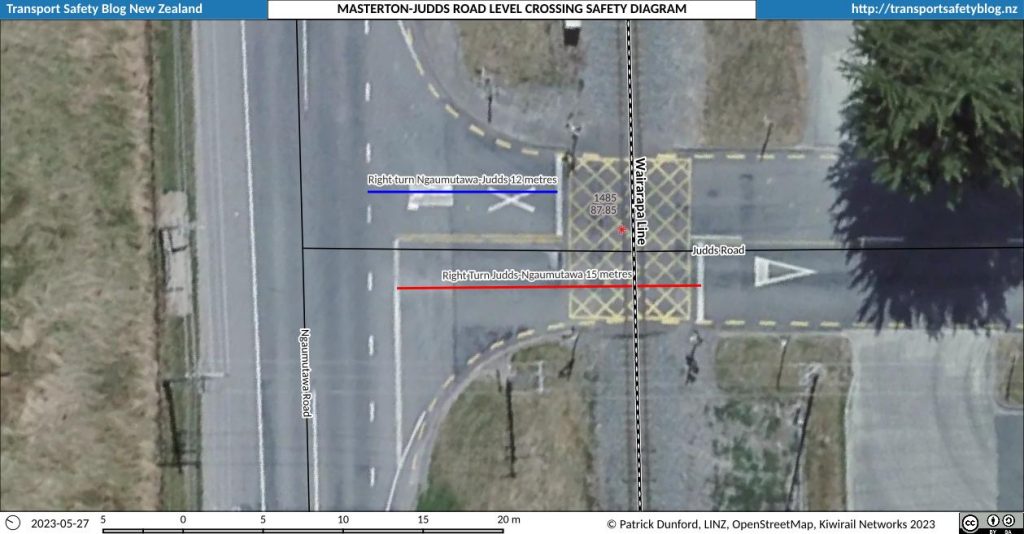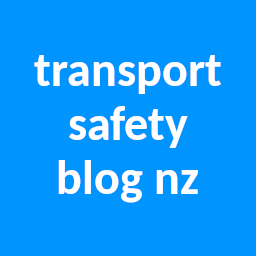Due to the Wairarapa Level Crossing Upgrade Programme being conducted by Kiwirail, some level crossings in the Wairarapa District must be closed. One of those proposed for closure is at Judds Road in Masterton.

There are two key safety issues to be addressed at Judds Road Level Crossing and others like it. Using the above diagram, these are as follows:
- The RED line indicates the distance between the stopping place at the railway crossing and the stopping place of the intersection, for right turning traffic leaving Judds Road (this would increase somewhat for left turning traffic). The problem for heavy commercial vehicles longer than about 13 metres is to be able to stop at the intersection without the rear of their vehicle being over the crosshatched keep-clear area around the railway tracks. This area is required to be kept clear for safe clearances from the railway tracks when a train is passing. A technical term for the clearance needed is “stacking distance”.
If a vehicle is too long to be able to stop safely at the tracks then the only place they can safely stop while waiting for the gap in the traffic to enter the intersection is back on the far side of the railway tracks. This creates the problem that it is much more difficult to synchronise with a gap in the traffic. The vehicle must travel 15 metres from the stopping line on the railway crossing to the stopping line on the road. They are required to stop if necessary when they get to the road. In order to be able to carry out a safe maneuvre the time that it takes for the truck to accelerate from the stopping point at the railway tracks, to the intersection, and how long it takes to come to a stop again. Basically, it is practically impossible to achieve such a maneuvre safely unless the road is virtually empty of traffic in both directions. - The BLUE line indicates the distance between the exit boundary of the intersection and the stopping place for a vehicle, for right turning traffic entering Judds Road. This hazard occurs because right turning traffic does not have any other safe place they can stop and must be able to clear the intersection completely when carrying out a right turn. Traffic that is completing a left turn can often sit on the side of the road where other traffic can safely pass them if the road is wide enough.
There are multiple safety hazards for right turning traffic in this type of situation, including the following. TSBNZ refers to this collection of problems as “crossing overshoot hazard”:- At uncontrolled crossings, drivers of vehicles waiting to turn right from the main road into the side road will not have visibility of a train approaching from behind them.
- There is recognised high driver workload required to perform a right turn in traffic at busy times on the road. This means the driver is preoccupied with completing the turn on the road (which can be highly dangerous in itself) and may not see the railway warning lights, if there are any, before they have completed their turn.
- In the event they reach the stopping point for the crossing and find that a train is coming, they have only a very short distance in which to react and stop their vehicle before they overshoot the crossing.
Kiwirail is mostly focused on stacking clearance risk and has not evaluated overshoot risk. Overshoot risk is a significant issue that results in deaths on crossings around NZ every year. It is largely sidelined or unrecognised at present except in TAIC’s reports into some of the major level crossing accidents that have occurred around the country. TSBNZ’s major focus is to get overshoot risks recognised and assessed in level crossing safety analyses in the future.
